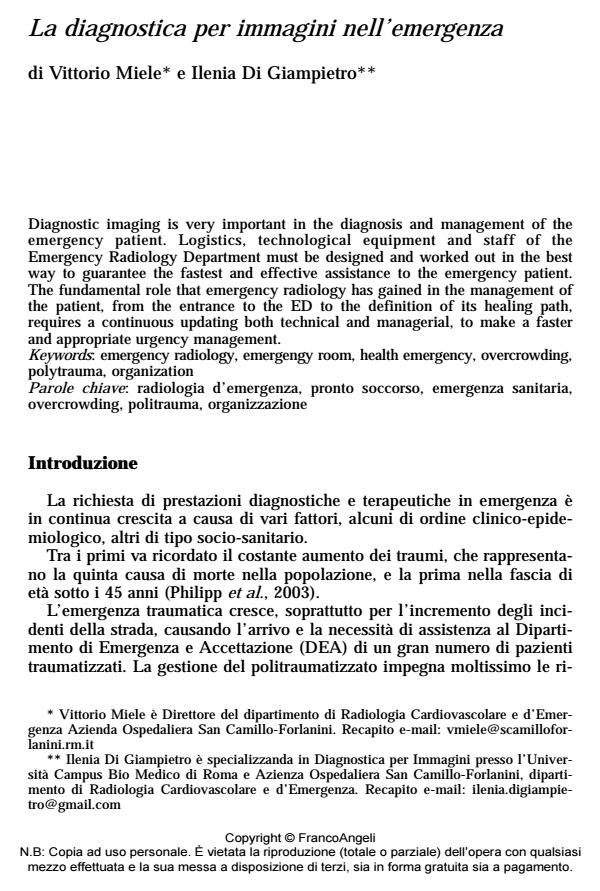La diagnostica per immagini nell’emergenza
Titolo Rivista SALUTE E SOCIETÀ
Autori/Curatori Vittorio Miele, Ilenia Di Giampietro
Anno di pubblicazione 2014 Fascicolo 2014/2
Lingua Italiano Numero pagine 14 P. 128-141 Dimensione file 494 KB
DOI 10.3280/SES2014-002011
Il DOI è il codice a barre della proprietà intellettuale: per saperne di più
clicca qui
Qui sotto puoi vedere in anteprima la prima pagina di questo articolo.
Se questo articolo ti interessa, lo puoi acquistare (e scaricare in formato pdf) seguendo le facili indicazioni per acquistare il download credit. Acquista Download Credits per scaricare questo Articolo in formato PDF

FrancoAngeli è membro della Publishers International Linking Association, Inc (PILA)associazione indipendente e non profit per facilitare (attraverso i servizi tecnologici implementati da CrossRef.org) l’accesso degli studiosi ai contenuti digitali nelle pubblicazioni professionali e scientifiche
Diagnostic imaging is very important in the diagnosis and management of the emergency patient. Logistics, technological equipment and staff of the Emergency Radiology Department must be designed and worked out in the best way to guarantee the fastest and effective assistance to the emergency patient. The fundamental role that emergency radiology has gained in the management of the patient, from the entrance to the ED to the definition of its healing path, requires a continuous updating both technical and managerial, to make a faster and appropriate urgency management.
Parole chiave:Emergency radiology, emergengy room, health emergency, overcrowding, polytrauma, organization
Vittorio Miele, Ilenia Di Giampietro, La diagnostica per immagini nell’emergenza in "SALUTE E SOCIETÀ" 2/2014, pp 128-141, DOI: 10.3280/SES2014-002011